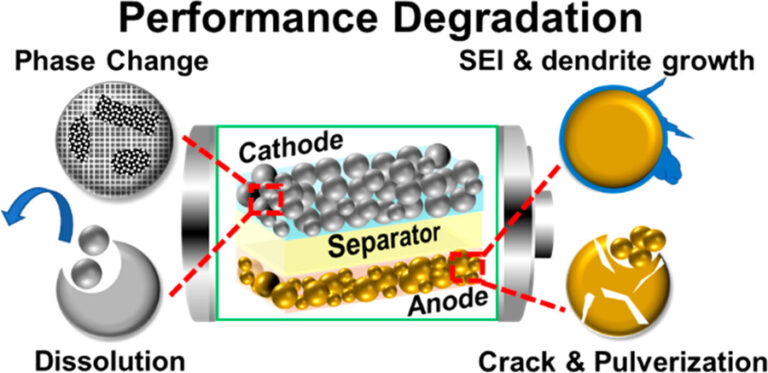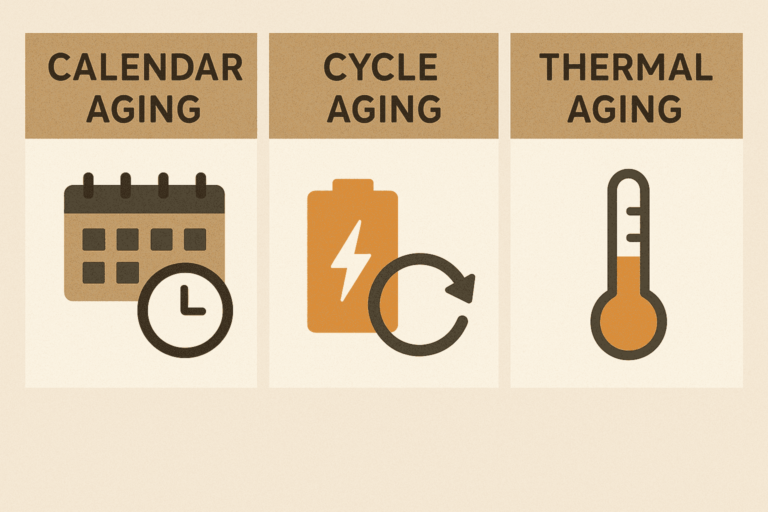
add here text

Why EV Batteries Lose Range: Everything You Need to Know About Degradation
related topics
As electric vehicles (EVs) surge in popularity, understanding the science of EV battery degradation becomes crucial for both consumers and industry experts. At the core of every EV is a lithium-ion battery—a high-performance energy storage system that powers everything from acceleration to climate control. However, these advanced batteries gradually lose capacity and efficiency due to various chemical, thermal, and mechanical stresses. This phenomenon, known as EV battery degradation, directly affects an electric vehicle’s driving range, charging speed, and overall performance longevity.
In this comprehensive guide, we’ll explore the root causes of battery aging, key degradation mechanisms like SEI layer growth, lithium plating, and cathode breakdown, and offer actionable strategies to reduce wear and extend battery life. We also highlight advanced diagnostic tools like Battery Management Systems (BMS) and look at promising technologies such as solid-state batteries and second-life applications.
Whether you’re a current EV owner or considering making the switch, this blog will equip you with the knowledge to optimize battery performance, improve vehicle longevity, and make sustainable choices for the future.
Electric vehicle (EV) battery degradation is a natural process where lithium-ion batteries lose capacity and efficiency over time. This impacts driving range, charging speed, and battery lifespan. Key causes include SEI layer growth, lithium plating, cathode breakdown, and extreme temperatures.
Types of aging—calendar, cycle, and thermal—can be accelerated by poor charging habits, deep discharges, and high states of charge. However, smart strategies like efficient charging, thermal management, and gentle driving can help reduce degradation.
Modern EVs use Battery Management Systems (BMS), EIS, and advanced sensors to track battery health. With new innovations like solid-state batteries and battery recycling, the future of EV energy storage is greener and more sustainable.
✅ Ideal for EV owners, enthusiasts, and green tech readers looking to maximize battery performance and lifespan.

Battery degradation refers to the gradual decline in a battery’s ability to store and deliver energy. In electric vehicles, this degradation can reduce both the driving range and charging performance over time. Two primary indicators of degradation are:
Capacity Loss 📉: The reduction in the total charge the battery can hold. This leads to shorter range per charge and reduced battery life.
Over time, fewer lithium ions are available to move between the electrodes, causing the battery to hold less energy. This happens because of side reactions and the gradual loss of active material.
Power Loss ⚠️: The increase in internal resistance which limits the rate at which energy can be delivered, affecting performance under load (e.g., acceleration).
As resistance increases, the battery becomes less efficient in delivering power quickly, which impacts performance, especially during rapid acceleration or fast charging.

The Solid Electrolyte Interphase (SEI) layer forms on the anode surface when the battery is first charged. While it protects the anode, this layer continues to grow with each cycle, consuming lithium ions. As a result, less lithium is available to store energy, leading to gradual capacity loss.
At low temperatures or during high-speed charging, lithium ions can deposit as metallic lithium on the anode surface. This process, called lithium plating, permanently removes lithium from the cycle and increases the risk of short circuits and capacity loss.
High voltages or elevated temperatures can degrade the cathode material. The structural breakdown causes loss of active material and triggers metal dissolution, especially cobalt or manganese, which further contaminates the electrolyte and degrades performance.
Electrolyte solutions inside the battery break down at high temperatures or extreme voltages. This leads to gas generation, increased pressure inside cells, and loss of ion conductivity—ultimately reducing battery efficiency and safety.
Every time a battery charges or discharges, its materials expand and contract. These constant volume changes can cause microscopic cracks in the electrode structure, isolating parts of the material and reducing the battery’s effective capacity.

Calendar Aging 📆: This occurs even when the EV is parked and not in use. Chemical reactions inside the battery slowly consume active lithium over time. Keeping the battery at high temperatures or a full charge accelerates this process.
Cycle Aging 🔁: Happens as the battery goes through charge and discharge cycles. Each cycle causes stress and minor damage, leading to gradual degradation. High depth of discharge and fast charging speeds intensify the effect.
Thermal Aging 🌡️: High temperatures accelerate side reactions and damage battery components. Poor thermal management or parking in the sun often worsens this issue.
Depth of Discharge (DoD) 📉: Frequently discharging the battery to 0% shortens its lifespan. It’s better to operate between 20% and 80% to minimize stress.
High Charging Rates ⚡: Fast chargers push high current into the battery, increasing heat and speeding up wear. While convenient, frequent use of DC fast chargers should be minimized.
Temperature Extremes 🥶🥵: Both hot and cold temperatures negatively impact battery chemistry. Avoid charging in extreme weather and use preconditioning when possible.
High State of Charge (SOC) 🔋: Keeping the battery at 100% for long periods stresses the cell structure and promotes chemical reactions that accelerate aging.
Battery Management System (BMS) 🔍: This smart system continuously monitors each cell’s voltage, temperature, and current to maintain safety and performance. It balances cells and helps extend battery life.
Electrochemical Impedance Spectroscopy (EIS) 📊: This technique measures how the battery resists electric current over a range of frequencies. Higher resistance usually means more degradation.
Incremental Capacity & Differential Voltage Analysis 🧪: These analytical tools detect subtle changes in battery behavior over time, helping engineers pinpoint failure modes and predict remaining life.

Avoid fully charging or fully discharging your EV battery. Most manufacturers recommend charging up to 80–90% for daily driving and only going to 100% for long trips.
Use climate control features and park in shaded or insulated areas. Some EVs come with battery preconditioning, which helps regulate temperature before driving or charging.
Aggressive acceleration and hard braking increase battery stress. Smooth driving reduces energy spikes and keeps temperatures stable.
New battery technologies such as solid-state batteries and silicon-anode cells are more stable and offer longer life spans. While still emerging, they hold promise for future EVs.
Even after they’re no longer ideal for driving, EV batteries retain up to 70–80% of their capacity. These can be repurposed for:
Home energy storage systems
Solar panel backup solutions
Grid energy support for peak load shifting
Battery recycling also allows recovery of valuable materials like lithium, cobalt, and nickel, reducing the need for new mining and helping build a more circular economy.
Most modern EVs experience only 2–3% battery capacity loss per year under normal conditions.
Battery degradation in EVs is a complex yet predictable aspect of owning electric vehicles. By understanding key causes of lithium-ion battery aging, practicing smart charging habits, and leveraging tools like the Battery Management System (BMS), EV owners can maintain peak battery performance, prolong their vehicle’s lifespan, and reduce long-term maintenance costs. As innovations like solid-state batteries, recyclable battery materials, and second-life applications continue to evolve, the future of EV battery sustainability looks brighter than ever. Staying informed and proactive helps you protect your EV investment, minimize environmental impact, and enjoy seamless, long-range driving for years to come.
Most electric vehicle batteries degrade at a rate of around 2–3% per year, depending on usage patterns and environmental conditions. After 5 years, you can typically expect to lose 10–15% of your original driving range. For example, an EV with a 400 km range when new might drop to 340–360 km after 5 years. Regular charging between 20% and 80%, avoiding extreme temperatures, and minimizing fast charging can help slow this degradation.
In many cases, yes—but it depends on your EV model and battery architecture. Some manufacturers allow modular cell or module replacement, which can be more cost-effective than replacing the entire battery pack. However, this process requires precise diagnostics and should only be done by certified technicians, as mismatched cells can lead to safety and performance issues. Always consult your manufacturer or service center for model-specific options.
Not necessarily worse, but electric scooters often lack the advanced thermal management systems found in cars, making their batteries more vulnerable to temperature-related degradation. Scooters also tend to experience deeper discharge cycles and more variable charging habits, especially in shared or high-usage fleets. With proper care—such as avoiding full discharges, storing indoors, and charging to ~80%—scooter batteries can still maintain 70–80% capacity over 3–5 years.

about author
Share this article
subscribe for weekly updates




1 Comment
0baeec